Related Research Articles

The Modern Lovers were an American rock band led by Jonathan Richman in the 1970s and 1980s. The original band existed from 1970 to 1974 but their recordings were not released until 1976 or later. It featured Richman and bassist Ernie Brooks with drummer David Robinson and keyboardist Jerry Harrison. The sound of the band owed a great deal to the influence of the Velvet Underground and the Stooges, and is now sometimes classified as "proto-punk". It pointed the way towards much of the punk rock, new wave, alternative and indie rock music of later decades. Their only album, the eponymous The Modern Lovers, contained idiosyncratic songs about dating awkwardness, growing up in Massachusetts, love of life, and the USA.

The Runaways were an American rock band who recorded and performed from 1975 to 1979. Formed in 1975 in Los Angeles, the band released four studio albums and one live album during its run. Among their best-known songs are "Cherry Bomb", "Hollywood", "Queens of Noise" and a cover version of the Velvet Underground's "Rock & Roll". Never a major success in the United States, the Runaways became a sensation overseas, especially in Japan, thanks to the single "Cherry Bomb".
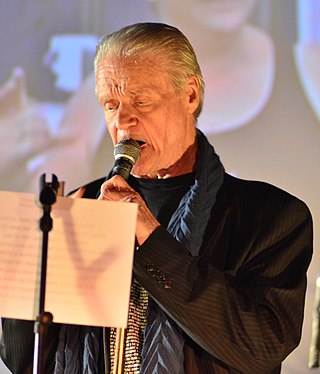
Kim Vincent Fowley was an American record producer, songwriter and musician who was behind a string of novelty and cult pop rock singles in the 1960s, and managed the Runaways in the 1970s. He has been described as "one of the most colorful characters in the annals of rock & roll", as well as "a shadowy cult figure well outside the margins of the mainstream".

After the Gold Rush is the third studio album by the Canadian-American musician Neil Young, released in September 1970 on Reprise Records. It is one of four high-profile solo albums released by the members of folk rock group Crosby, Stills, Nash & Young in the wake of their chart-topping 1970 album Déjà Vu. Young's album consists mainly of country folk music along with several rock tracks, including "Southern Man". The material was inspired by the unproduced Dean Stockwell-Herb Bermann screenplay After the Gold Rush.
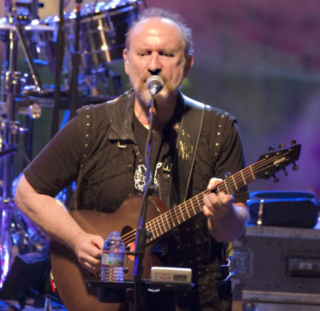
Colin James Hay is a Scottish-Australian musician, singer, songwriter, and actor. He came to prominence as the lead vocalist and the sole continuous member of the band Men at Work, and later as a solo artist. Hay's music has been used frequently by actor and director Zach Braff in his work, which helped a career rebirth in the mid-2000s. Hay is a member of the band Ringo Starr & His All-Starr Band.
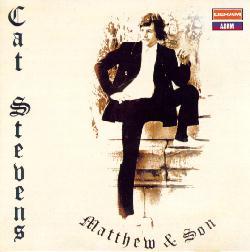
Matthew and Son is the debut studio album by British singer-songwriter Cat Stevens, released in March 1967.

Wanted Dead or Alive is the debut studio album by singer-songwriter Warren Zevon. The album released by Liberty Records in 1970 under the moniker "Zevon".
Venus and the Razorblades were a short-lived punk rock band from Los Angeles, California, formed and managed by Kim Fowley after his initial separation with The Runaways in 1976. They are believed to be one of the first mixed-gender American punk bands.

Craig Benjamin Wedren is an American singer-songwriter, musician and composer, who began his career fronting post-hardcore band Shudder to Think. Following the disbandment of Shudder to Think, Wedren pursued a career as a television and film music composer, as well as releasing solo material.
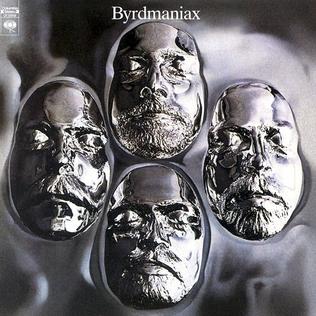
Byrdmaniax is the tenth album by the American rock band the Byrds. It was released in June 1971 on Columbia Records at a time of renewed commercial and critical success for the band, due to the positive reception that their two previous albums, Ballad of Easy Rider and (Untitled), had received. The album was the second by the Byrds to feature the Roger McGuinn, Clarence White, Gene Parsons, and Skip Battin line-up of the band and was mostly recorded in early 1971, while the band were in the midst of an exhausting tour schedule. As a result, the band had little time to hone their new songs before recording commenced and thus, much of the material on the album is underdeveloped. Byrdmaniax was poorly received upon release, particularly in the United States, and did much to undermine the Byrds' new-found popularity.

The West Coast Pop Art Experimental Band (WCPAEB) was an American psychedelic rock band formed in Los Angeles, California, in 1965. The group created music that possessed an eerie, and at times sinister atmosphere, and contained material that was bluntly political, childlike, and bizarre. Representing different musical backgrounds among band members, the group, at times, resembled a traditional Byrds-esque folk rock ensemble, but the WCPAEB also, within the same body of work, recorded avant-garde music marked by multi-layered vocal harmonies.

The Modern Lovers is the debut studio album by American rock band the Modern Lovers. It was released on Beserkley Records in 1976, though the original tracks had been recorded in 1971 and 1972. Six of the original tracks were produced by John Cale.
Queens of Noise is the second studio album by the American rock band the Runaways, released on January 7, 1977, through Mercury Records.

Clyde "Skip" Battin was an American singer-songwriter, bassist, performer, and recording artist. He was a member of the Byrds, the New Riders of the Purple Sage, and the Flying Burrito Brothers.
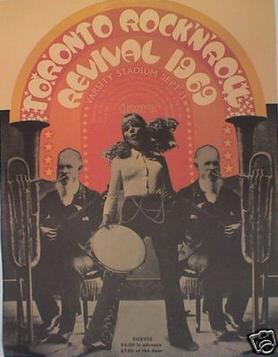
The Toronto Rock and Roll Revival was a one-day, twelve-hour music festival held in Toronto, Ontario, Canada on September 13, 1969. It featured a number of popular musical acts from the 1950s and 1960s. The festival is particularly notable as featuring an appearance by John Lennon, Yoko Ono, Eric Clapton, Klaus Voormann and Alan White as the Plastic Ono Band, which resulted in the release of their Live Peace in Toronto 1969 album. The festival was also the subject of two films: D.A. Pennebaker film Sweet Toronto and the 2022 Ron Chapman film Revival 69: The Concert That Rocked the World.

Dianna Marie St. Hilaire, better known as Opāru, is an American actor, singer and composer from Los Angeles, California. She was born in Modesto, California and grew up in Albuquerque, New Mexico. Her genre is Dark Electro Pop, Pop, and Ethereal.

The Original Modern Lovers is an album of songs recorded by American rock band the Modern Lovers. The sessions were produced by Kim Fowley in 1973 and first released in 1981 by Fowley's short-lived Mohawk Records label, a subsidiary of Bomp! Records.
Michael Jeffrey Lloyd is an American record producer, arranger, songwriter and musician. After working with Mike Curb, Kim Fowley and others in the mid-to-late 1960s on musical projects including the West Coast Pop Art Experimental Band, and Steven Spielberg's first short film, Amblin', he became a producer of such teen idol pop stars as the Osmonds, Shaun Cassidy and Leif Garrett in the 1970s.
The Fire Escape was an American psychedelic rock band formed in San Francisco, California, in 1967. Existing mainly as a studio group composed of unknown session musicians, the band was masterminded by record producer Kim Fowley and Michael Lloyd. The project produced one album called Psychotic Reaction, which contained mainly cover versions of popular songs from the era. It is reported that Sky Saxon of the garage rock band, the Seeds and Mars Bonfire of Steppenwolf, played on some of the tracks.
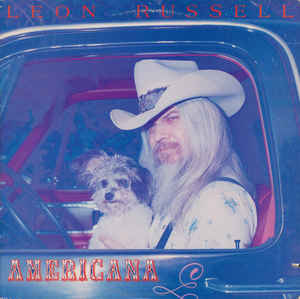
Americana is an album by singer and songwriter Leon Russell. The album peaked at number 115 on the US Billboard 200. The album was first released as a vinyl LP Album by Leon's new label Paradise Records. Americana was re-released on CD by Wounded Bird Records in 2007 and again in 2012 by Ais. The album was by produced by Leon Russell.
References
- ↑ St. John Green, Unsung: The Book of Seth, HeadHeritage.co.uk. Retrieved 1 February 2015
- 1 2 Liner notes to St. John Green reissue CD, Relics Records
- 1 2 3 4 Interview with Mike Baxter, 60sGarageBands.com Archived 2014-12-21 at the Wayback Machine . Retrieved 1 February 2015
- 1 2 "Kim Fowley: Sins & Secrets of the Silver Sixties", originally published in Ugly Things , #19, 2001. Retrieved 1 February 2015
- ↑ St. John Green, Relics Records
- ↑ Mike "Papa Bax" Baxter, The Wired Blues Band. Retrieved 1 February 2015
- ↑ William Saint James, Discogs.com. Retrieved 1 February 2015
- ↑ "William S. Kirkland 1948-2010", PapaBax.com. Retrieved 17 September 2021